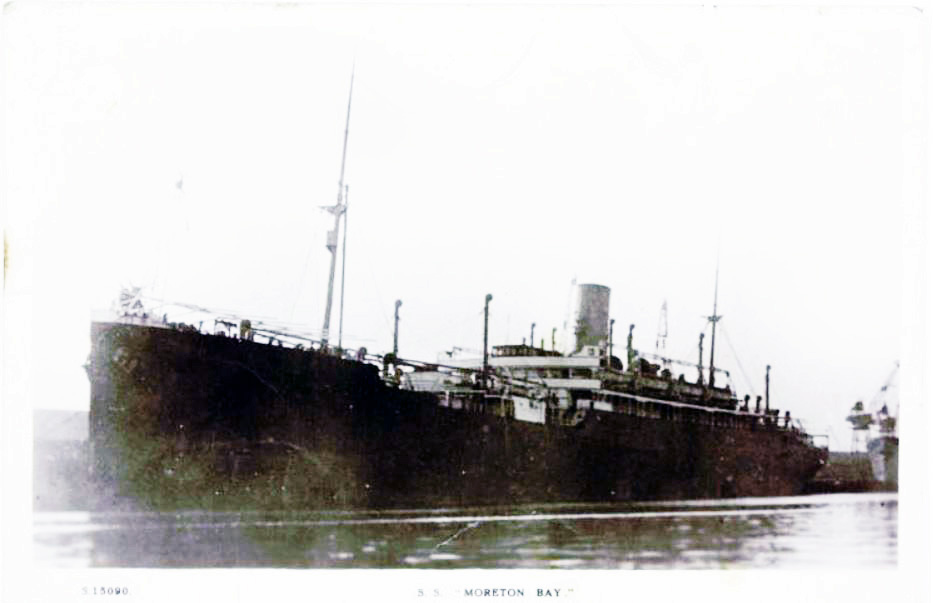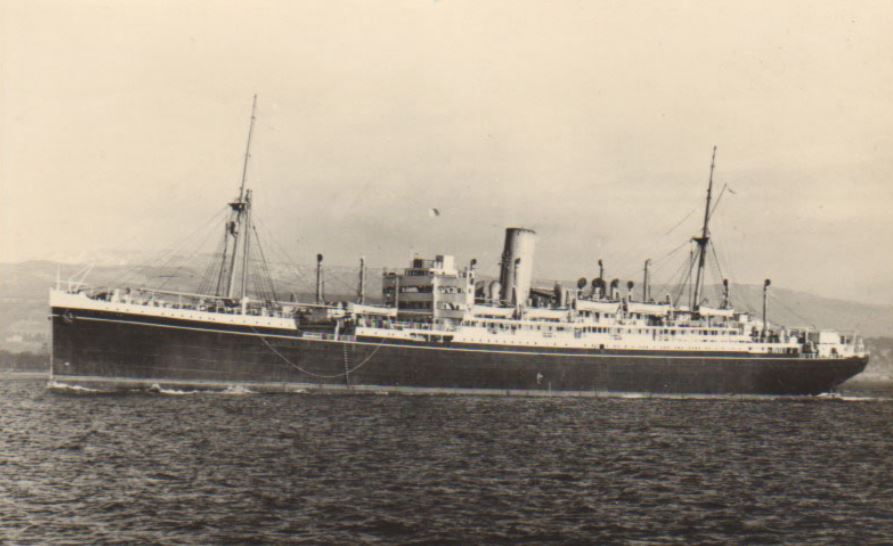HMT Moreton Bay
From Our Contribution
Contents
[hide]Remarks
During the years which immediately followed WW1 the Australian Commonwealth Line announced that five identical twin-screw passenger-cargo liners had been ordered from British shipyards for the Australian emigrant service. The ships were specifically designed to operate a schedule of monthly departures between the ports of London, Fremantle, Adelaide, Melbourne, Sydney and Brisbane. Their advent was supposed to rid the Commonwealth fleet of the rather 'mixed bag' of vessels in current use.
The new steamers, all completed during 1921 and 1922, were each named after a bay situated in each of the five federal States served by the company. As such they became known throughout Australia as the 'Bay ships'. Three of these vessels were constructed by the famous Vickers, Armstrongs organisation at Barrow. They were Moreton Bay, Hobsons Bay and Jervis Bay. The three Barrow-built ships featured a similar passenger configuration of a tiny 12 passenger first class (mainly for Government officials) and a more spacious complement of over 700 third class passengers. Ownership changed several times with the Aberdeen & Commonwealth Line owners before and after WWII. During 1923 the Moreton Bay twice collided with other ships (Margit Siemens and Chemitz) before being refitted as a one class ship in 1931
Upon the outbreak of WWII, Moreton Bay was discharging cargo at Australia where in October 1939 she was hurriedly converted as an Armed merchant cruiser and later (1941) for troop carrying. Moreton Bay experienced a relatively uneventful war despite her thousands of miles patrolling the Atlantic and later service as a troop transport. Her one great claim to fame occurred on 31 October 1940 when she captured the French liner Cuba which had attempted to run the blockade outside harbour in order to get to a Vichy French port. After conversion into a 'trooper' Moreton Bay gave sterling service on the North Atlantic route and at the North African and Normandy landings. During the African invasion she was damaged during an air raid at Algiers. However the damage was not of German origin. Moreton Bay had been abandoned in haste by her tugs as the siren sounded, leaving her to crash heavily into the pier.
Moreton Bay returned to her owners following the war. After a refit she journeyed in company with Largs Bay and Esperance Bay (2), until April 1957 when she was sold to breakers at Barrow-in-Furness from where she had first set out over 36 years earlier.
Soldiers carried
Singapore to Fremantle 15 - 24 October 1945
- Ronald Hamilton Cornish Returning POW
- William Rice Gregory Returning POW

